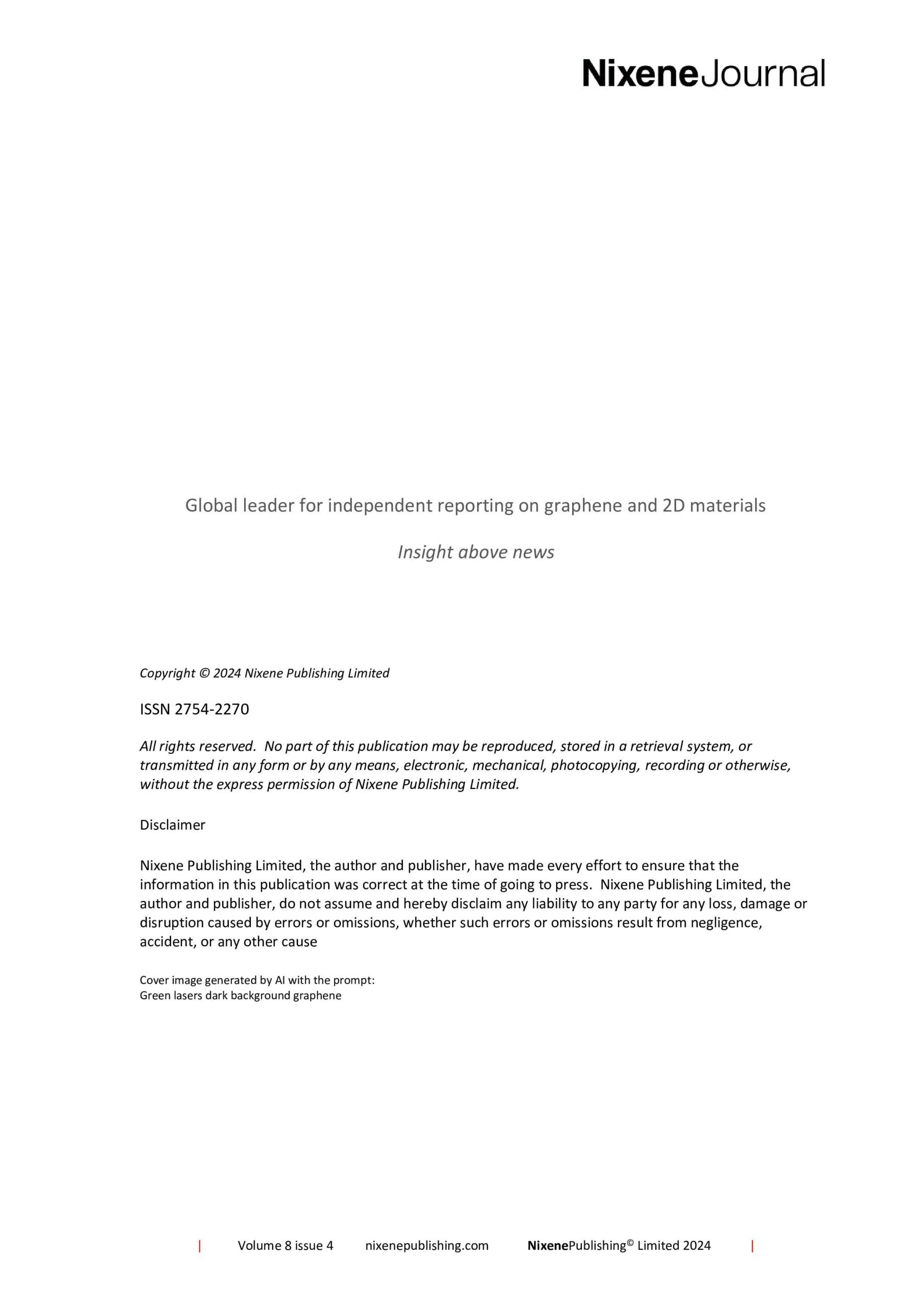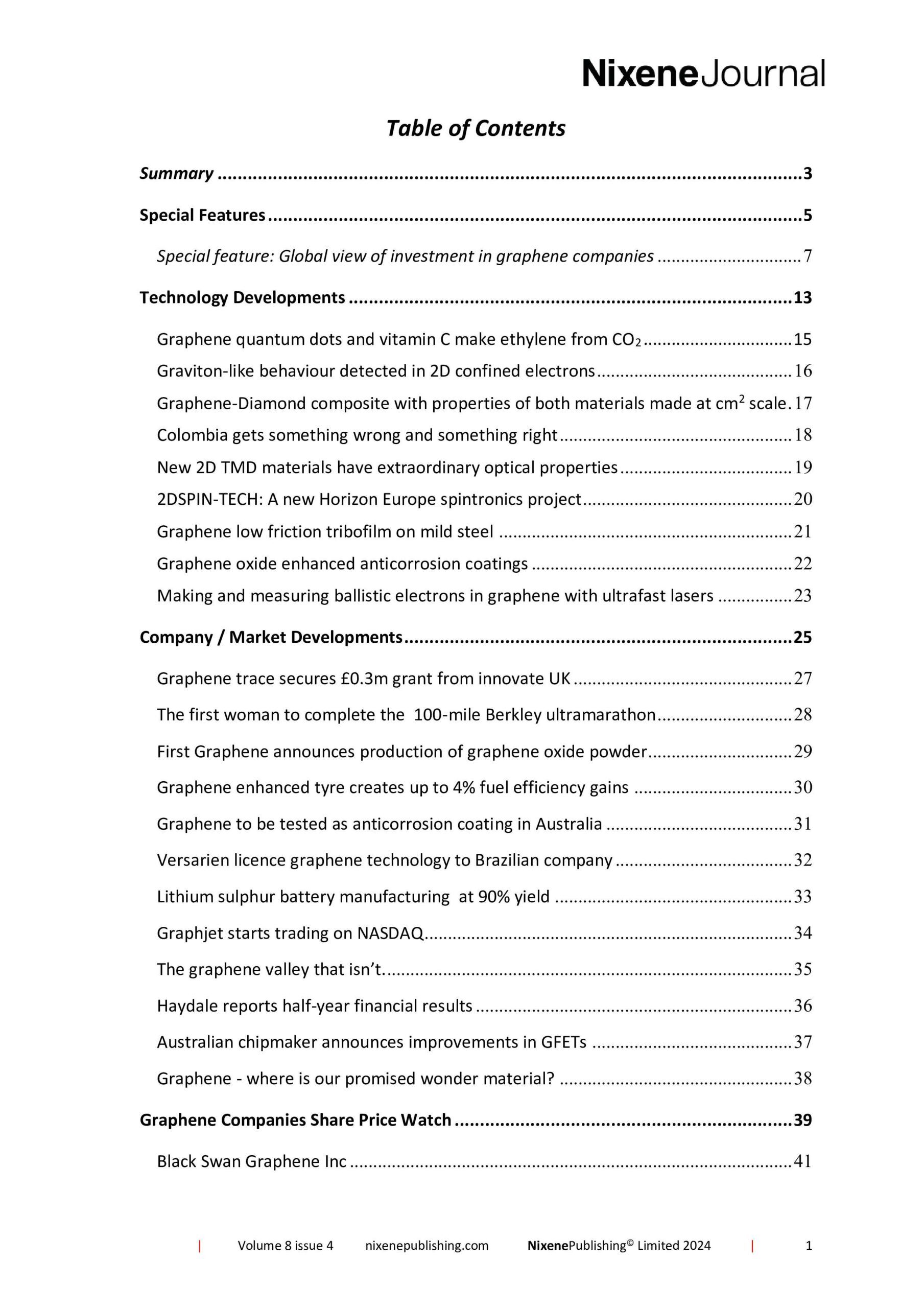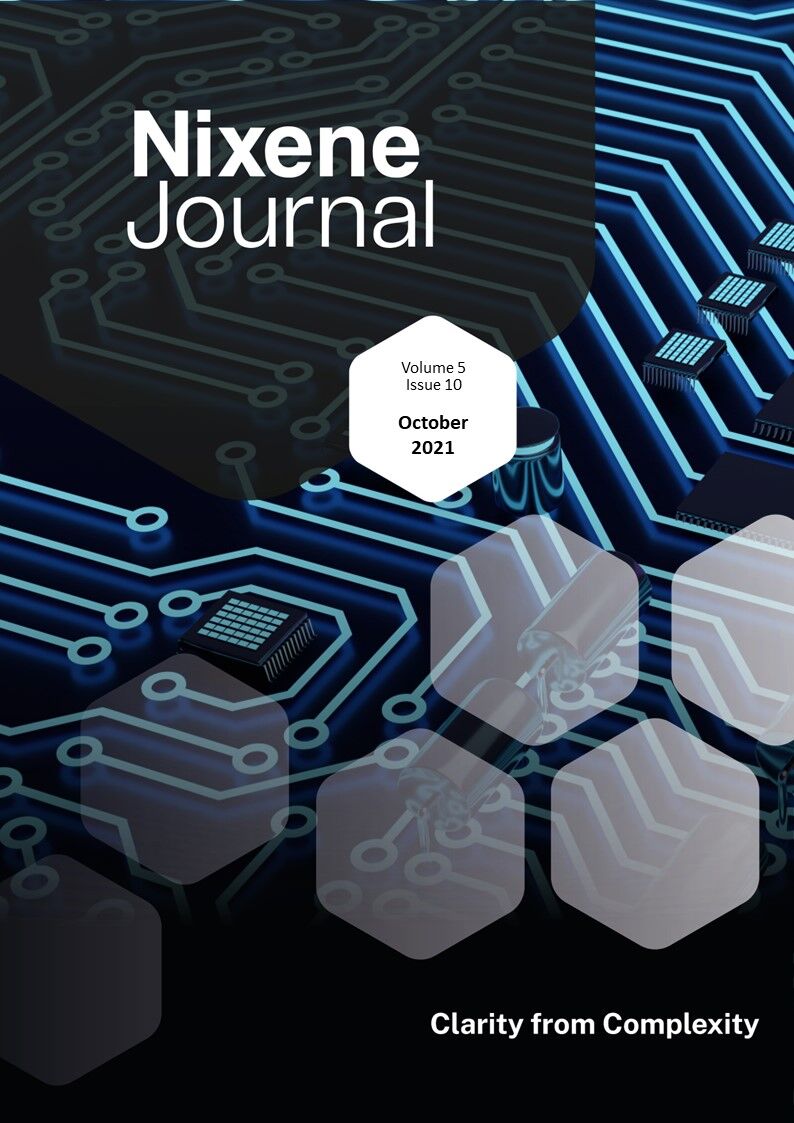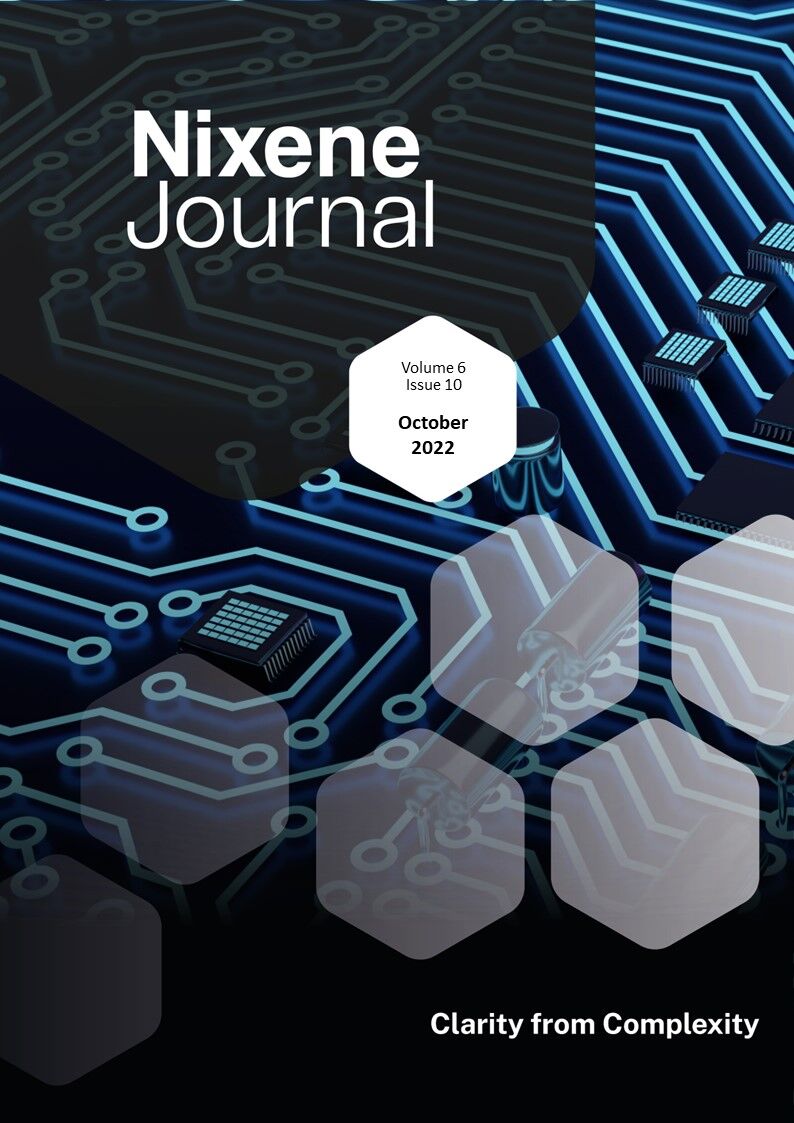Description
We have had several conversations recently about the state of publicly quoted graphene companies. Looking at the share prices, none are doing particularly well. This is true as you will see by referring to our share price trends section. However, it is not the full story as regular readers will know a great deal of investment has been taking place.
We decided to take a closer look at the amount of investment. What we found surprised us. Since 2020 1.7 billion dollars (USD equivalent) has been announced in graphene companies worldwide. You can see our research in the special feature this month.
Lasers feature on our cover this month because two separate research projects have produced interesting results.
A team at the University of Kansas used laser pulses to make electrons jump from one graphene sheet to another in a van der Waals heterostructure. Then they used another laser to measure their speed. They found that the electrons travelled at 22 kilometres per hour in graphene before collisions slowed them down. This ballistic travel is at very small scales now (400nm). However, the team can use this like a speed ‘radar gun’ to measure and design experiments to improve this. If they can improve the speeds at metre scale, then they will revolutionise electricity transmission. There is a long way to go, but they have made a small start.
Another team led by researchers at Princeton University has used lasers to investigate what happens to electrons that are confined in two dimensions (2D) in a magnetic field. They discovered that the electrons act collectively, and this behaviour creates a quasi-particle whose properties could be investigated. They show that this new particle behaves in the same way that the hypothetical graviton does. The graviton mediates the force of gravity and could provide a step towards unifying quantum and classical physics. The team’s graviton analogue could open the door to new physics. However, given that it is confined to two dimensions it will take a lot more work to translate this discovery to the three-dimensional world we all experience.
It is not just exotic particles that turn up in 2D materials, Columbia University points out that electrically conductive 2D graphene is revealing previously unknown interactions between electrons and studying these interactions could help understand phenomena such as unconventional superconductivity in graphene.
This is another fascinating issue packed with our curated content. Dear reader I encourage you to explore more in the following pages.
Adrian Nixon
1st April 2024











